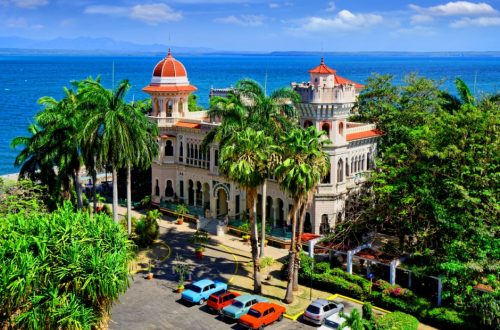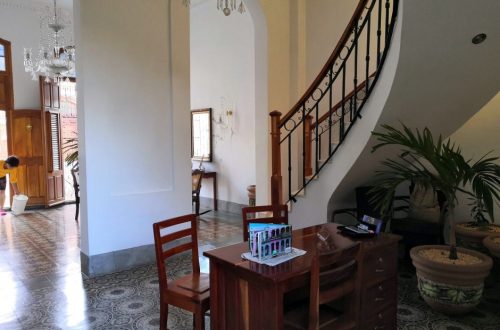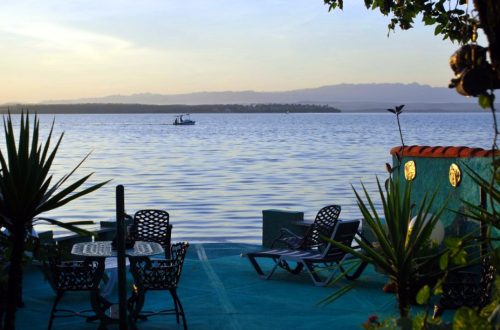History
Cienfuegos, a city nestled along the southern coast of Cuba, is a vibrant and historic destination that has managed to captivate travelers and history buffs alike. Known as the “Pearl of the South,” this UNESCO World Heritage Site boasts a rich history filled with colonial architecture, cultural evolution, and political intrigue. In this 3,000-word article, we will delve into the fascinating past of Cienfuegos, exploring the events and people that have shaped its unique identity over time.
The Founding of Cienfuegos
Cienfuegos was founded on April 22, 1819, by French settlers led by Don Luis De Clouet, a Spanish military officer of French descent. It was initially named Fernandina de Jagua, in honor of King Ferdinand VII of Spain. The city was strategically situated along the Bay of Jagua, making it an ideal location for trade and defense. Its establishment was part of a broader Spanish strategy to encourage the settlement of French immigrants in Cuba to counterbalance the influence of other European powers in the region.
The French settlers who founded Cienfuegos brought with them architectural styles, customs, and cultural practices that would shape the city’s development. In the early years, the city experienced rapid growth as it attracted more settlers from Europe and the surrounding regions. By the mid-19th century, Cienfuegos had become an essential hub for sugar, coffee, and tobacco production, which fueled its economic prosperity.
The Architectural Heritage of Cienfuegos
Cienfuegos is renowned for its remarkable urban layout and stunning architecture, which reflect the city’s French origins and the Spanish colonial influence. Its historic center, known as the Pueblo Nuevo, is characterized by a rational and harmonious urban design, with wide streets and well-defined blocks.
Some of the most iconic buildings in Cienfuegos include:
The Cathedral of the Immaculate Conception: Built between 1833 and 1869, this neoclassical masterpiece is characterized by its twin bell towers and a beautiful stained-glass window depicting the Virgin Mary.
The Palacio de Valle: Completed in 1917, this eclectic palace blends Moorish, Gothic, and Venetian architectural styles. It once belonged to a wealthy merchant and now serves as a cultural center and restaurant.
The Tomás Terry Theater: Opened in 1895, this majestic theater is dedicated to the memory of Tomás Terry, a Venezuelan-born entrepreneur who made his fortune in Cienfuegos. It features stunning frescoes, sculptures, and a magnificent ceiling painted by Italian artist Camilo Salaya.
The Abolition of Slavery and the Independence Struggle
Cienfuegos, like the rest of Cuba, witnessed the horrors of slavery, which was the backbone of the island’s sugar industry. In 1886, the Spanish government abolished slavery in Cuba, and the event marked a turning point in the city’s history. With the end of slavery, the sugar industry went into decline, and Cienfuegos began to diversify its economy.
The struggle for Cuban independence from Spain gained momentum in the late 19th century, and Cienfuegos played a significant role in this movement. José Martí, Cuba’s national hero and a key figure in the fight for independence, visited Cienfuegos in 1894 to gather support for the cause. A year later, the Cuban War of Independence broke out, and Cienfuegos became a strategic center for the revolutionary forces led by General Máximo Gómez and Antonio Maceo.
The American Occupation and the Cuban Republic
After the Spanish-American War of 1898, Spain ceded control of Cuba to the United States. Cienfuegos, like the rest of the island, experienced a period of American military occupation until the establishment of the Cuban Republic in 1902. During this time, the city underwent significant infrastructural improvements, including the construction of a railroad connecting Cienfuegos to Havana and other parts of the island.
The American presence also brought new architectural styles and urban planning concepts to Cienfuegos, which are evident in the buildings constructed during this period. One notable example is the Hotel La Union, a neoclassical building with elements of American Colonial Revival architecture, which opened its doors in 1902.
The Cuban Revolution and Its Impact on Cienfuegos
Cienfuegos experienced profound changes following the Cuban Revolution in 1959, led by Fidel Castro. The new socialist government implemented various social and economic reforms that affected the city’s development. Industries were nationalized, and land reforms were carried out to redistribute land and resources among the population. These changes led to a decline in the city’s traditional sugar, coffee, and tobacco industries.
During the Cold War, Cienfuegos became an essential strategic location for the Soviet Union, which provided significant economic and military support to the Cuban government. In 1967, a major oil refinery was built in Cienfuegos with Soviet assistance, and the city became an important center for the island’s emerging petrochemical industry.
Cienfuegos Today: A Vibrant Cultural Hub
In the post-Cold War era, Cienfuegos has evolved into a thriving cultural hub that attracts visitors from around the world. The city’s rich architectural and historical heritage, combined with its picturesque coastal location, has made it a popular destination for both tourists and Cubans alike.
Cienfuegos boasts a lively arts scene, with numerous galleries, theaters, and cultural centers that showcase the city’s creative spirit. The Cienfuegos Art School, founded in 1962, has played a pivotal role in fostering artistic talent in the region. The city is also home to the Benny Moré Cultural Center, which pays tribute to the famous Cuban musician who was born in nearby Santa Isabel de las Lajas.
In recent years, Cienfuegos has embraced sustainable development and eco-tourism, with initiatives aimed at preserving its natural resources and promoting environmentally friendly practices. The Guanaroca Lagoon, located just outside the city, is a prime example of this commitment to conservation. The lagoon is a protected area and a sanctuary for various bird species, including the Cuban flamingo.
Cienfuegos, the Pearl of the South, is a city with a fascinating history that has been shaped by the confluence of diverse cultures, political movements, and economic forces. From its foundation by French settlers to its role in the Cuban Revolution, Cienfuegos has remained a dynamic and evolving urban center that continues to captivate visitors and residents alike.
Today, the city stands as a testament to the resilience and creativity of the Cuban people. Its stunning architecture, vibrant cultural scene, and commitment to sustainable development make Cienfuegos a must-see destination for anyone looking to explore the rich tapestry of Cuba’s past and present.



